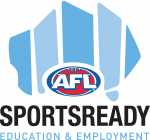Welcoming people from culturally and linguistically diverse (CALD) communities
Australia has a diverse population which is reflected in both elite and grassroots sport. A great example is the sport of football (soccer) which has a long history of participation by people who migrated to Australia from many countries around the world.
The term ‘Culturally and Linguistically Diverse (CALD)’ is the preferred term used by many government agencies and peak bodies to broadly describe people who differ according to religion, race, language and ethnicity, excluding people whose ancestry is Anglo-Saxon, Anglo Celtic, Aboriginal or Torres Strait Islander. CALD is often used to refer to newly arrived migrants and refugees and the descendants of immigrants to Australia.
While many sporting environments may already reflect our diverse community there are still many opportunities to improve accessibility that every sport organisation in Victoria should consider. Ensuring that facilities are accessible, your communications are accessible and that barriers around the cost and location of programs are minimised is something that every sport organisation should continue to focus on. This will not only make your sport more accessible to people from culturally and linguistically diverse backgrounds – it will help you sport to be accessible to everyone.

Girls from CALD communities participating at a football clinic. Photo credit: Melbourne City Football Club
If your organisation is working with culturally and linguistically diverse people, including newly arrived migrants or refugees, there are a few things you should consider in accessing programs:
- Is the cost of your programs, membership or competition fees a barrier to some people?
- Is transport a barrier and is there an opportunity for you to conduct activities in various locations which make it easier for people to attend?
- Do you have equipment for people to borrow so they can try your sport?
These points are expanded upon in the Activities and Programs page below. Another consideration is whether cultural differences create a barrier that you may not be aware of without speaking to the local community.
In Australia, the bedrock of local sport participation and administration is clubs and associations. Most are traditionally run by volunteers. Yet in many countries where migrants and refugees originate from, the way sport is delivered is likely to be different. Therefore, don’t assume that newly arrived people understand that way clubs operate. People from diverse backgrounds may be uncertain about approaching a club because of fears of racism or lack of familiarity with the environment.
L-R: Girls from CALD backgrounds playing a round of bowls, father teaching his son the basics of badminton at a clinic. Photo credit: Bowls Victoria and Badminton Victoria
While the barriers mentioned above are commonly referred to in research and feedback from State Sporting Associations, each community is different and has different needs. Your organisation will benefit by getting to know your local community and consulting with community leaders. If you aim to offer opportunities to a specific group – such as newly arrive people from the same country – then try to speak to them directly so that you understand the barriers they face and the benefits they are seeking. This allows you to tailor you programs to meet their needs. Community leaders may include the leaders of local community support organisations, leaders of migrant and refugee support organisations, leaders of religious institutions, or prominent members of migrant communities.
Sport organisations use many forms of communication to promote and deliver sporting opportunities. This includes written and visual communication on websites, in emails and social media. It also includes face to face communication.
Therefore, it is important that your organisation works to ensure all formats of communication are accessible to everyone. This might mean providing translated resources on your website, connecting with the national Translation and Interpreting Service when necessary, providing communications in Easy English, using diverse imagery and helping your volunteers and coaches with simple communication techniques.
There are several resources which can help your organisation with creating accessible communications in your sport.
- CMY – Tip Sheet for Coaches and Trainers
- TIS - Translation and Interpreting Service
- Enthnologue – online encyclopedia of languages
- Office for Disability – Inclusive Procedures
- Office for Disability – Accessible Formats
A great example of a sport-specific resource is Cricket Australia’s ‘A Sport For All’ guide which provides useful information to assist clubs and associations to be more inclusive. The section about multicultural diversity provides a good summary of ways sport clubs can be inclusive of people from diverse backgrounds, including communication tips. Click here to view the resource.
Tom Dixon
Participation Strategy Manager, Vicsport
You may also be interested in...
Basketball – Walk don’t Run

Walking Basketball is the talk of the town – featuring on Channel Ten with a viral video promoting this new version of the traditional game
One Month at a Time - January

In this edition, new Vicsport CEO, Steven Potts introduces himself to the Sportsview readers in addition to encouraging everyone to nominate for the Victorian Sport Awards.
REVIEW: INSIGHTS AND INNOVATION LAB

This post is the first in a two part series by David Hood from Doing Something Good inspired by the recent Insights and Innovation Lab, presented as part of Vicsport’s Forward Thinking Series delivered with support from VicHealth


























